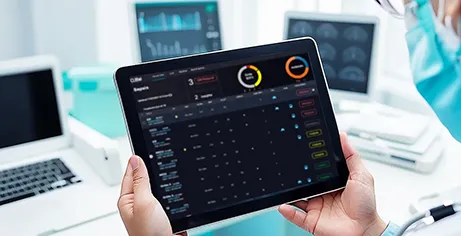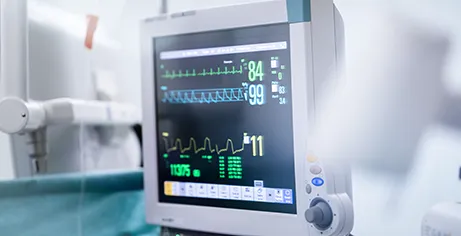A Condition-Oriented Surveillance Platform
Empower your health system and providers with CLEW’s cutting-edge platform. CLEW offers a dynamic surveillance platform that allows them to build different protocols for various clinical and operational use cases, unlocking new levels of efficiency and care excellence.

CLEW Platform Solutions
Use our condition-oriented surveillance platform to enhance your custom workflow, or choose from our current, ready-to-use packages.
A Toolset Designed for the Way You Work
CLEW’s Condition-Oriented Surveillance Platform consists of various tools, designed to present you the information you need, when you need it most.

Patient view
A unified patient view that consolidates critical data from multiple sources, all aligned on the same time scale for seamless interpretation. This streamlined display provides clinicians with actionable insights at a glance, enabling quick assessment of patient status, trends, and potential risks, supporting timely and informed decision-making with ease of use in mind.
Unit view
A comprehensive, multi-unit view that displays all patients across different units in a single, consolidated interface. Designed to enhance clinical oversight, it enables clinicians to efficiently monitor, assess, and prioritize care across multiple patients simultaneously. By providing a clear and organized presentation of key patient data, it streamlines decision-making, improves resource allocation, and ensures timely interventions where they are needed most.
Rounding Tool
An intelligent, priority-driven rounding tool that generates a dynamic patient worklist tailored for caregivers and their leadership. Designed to streamline daily workflows, it ensures that the most critical patients are prioritized while providing a structured, efficient approach to rounding.
Virtual Units & Protocol Adherence
Virtual units and protocols enable real-time, condition-specific surveillance by grouping patients with similar clinical conditions, regardless of their physical location. This approach provides a centralized, coordinated view of patient data, ensuring that clinicians can deliver focused, efficient monitoring tailored to each patient’s unique needs. By aligning care across multiple locations, virtual units enhance clinical oversight, promote consistent adherence to treatment protocols, and support timely intervention.
Predictive Models
CLEW’s AI-driven, FDA-cleared predictive models accurately forecast patient deterioration by analyzing clinical data in real time. These models detect early signs of decline, enabling proactive interventions to prevent adverse outcomes. By enhancing decision-making and improving patient safety, CLEW’s predictive models provide clinicians with a powerful tool for better care and timely action.
Best Practices
Enabling hospitals to rapidly tailor and deploy standardized clinical practices, ensuring consistent bedside care and streamlined clinical workflows. By allowing seamless adaptation to institutional guidelines, this feature enhances adherence to evidence-based protocols while reducing variability in treatment. With intuitive customization and real-time implementation, hospitals can optimize care delivery, improve patient outcomes, and drive operational efficiency.
NotifyMe
NotifyMe is a smart alerting tool that generates real-time alerts based on a patient’s current status. Acting as a safety net, it notifies clinical staff when a patient shows signs of deterioration, ensuring that critical clinical situations are identified promptly. This timely awareness allows healthcare providers to take immediate action, enhancing patient safety and improving outcomes.
BI & Reporting
Integrate seamlessly with business intelligence tools, enabling hospitals to generate comprehensive reports and conduct in-depth research. By transforming patient data into actionable insights, CLEW’s reporting supports data-driven decision-making, enhances clinical analytics, and drives continuous improvement in patient care and operational efficiency.
APAHE Support
CLEW’s automated documentation streamlines APACHE data collection and calculation, reducing manual workload and expediting the documentation process. By partially automating data entry and scoring. Our APACHE support enhances efficiency, minimizes errors, and ensures accurate, real-time insights for clinical assessment and decision-making.


